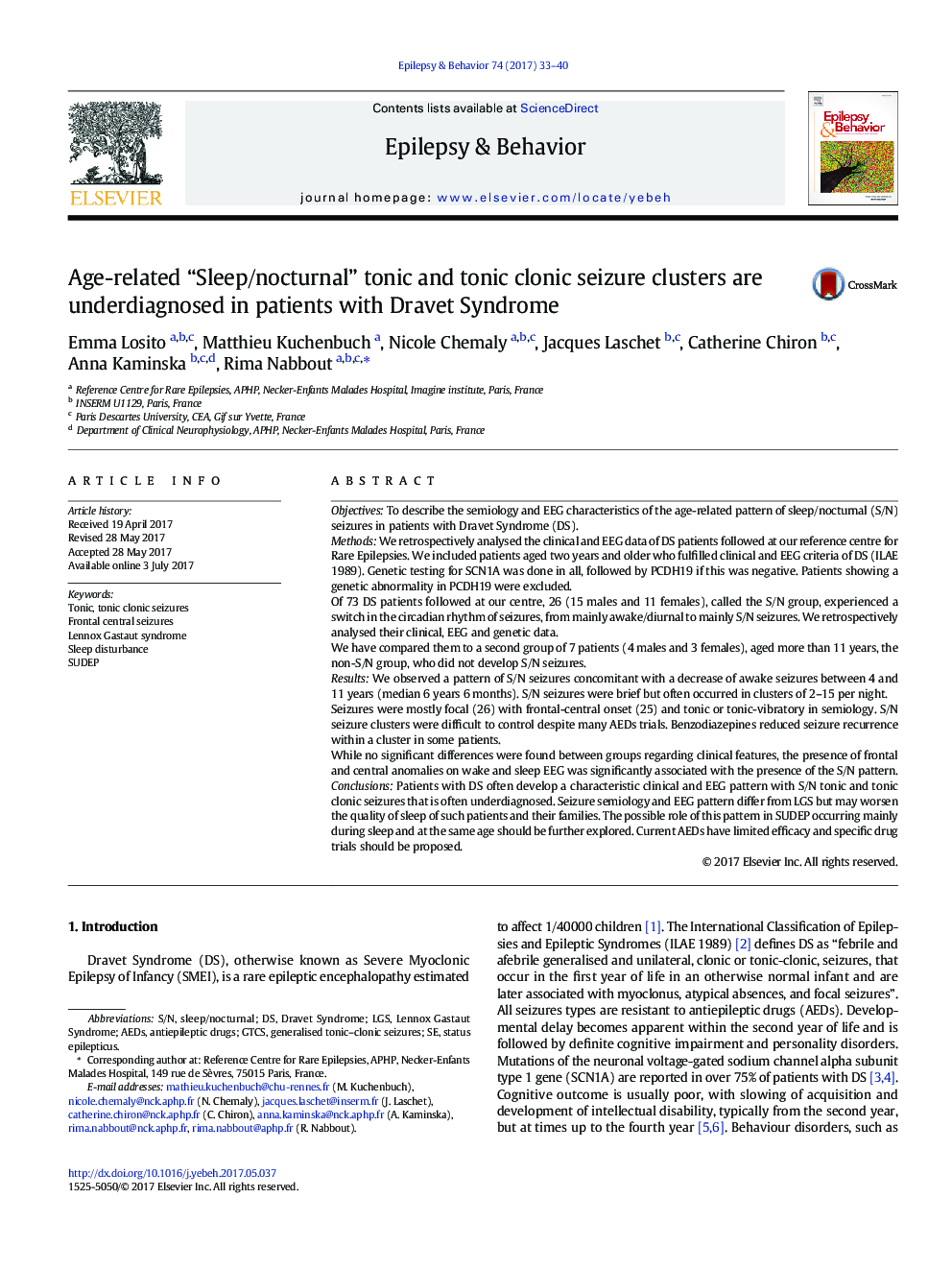| کد مقاله | کد نشریه | سال انتشار | مقاله انگلیسی | نسخه تمام متن |
|---|---|---|---|---|
| 5628210 | 1579819 | 2017 | 8 صفحه PDF | دانلود رایگان |

- Seizure semiology, frequency and duration change with age in patients with DS
- At a median age of 6 years, some DS patients shows a switch in the circadian pattern of seizures to sleep/nocturnal seizures
- "Sleep/nocturnal" seizures are often short, tonic or tonic-clonic. They occur in clusters with a frontal-central onset.
- Interictal EEG is characterised by frontal patterns that differ from those reported in Lennox Gastaut syndrome.
- The role of this seizure type in sleep disturbances and a possible link to SUDEP should be further explored.
ObjectivesTo describe the semiology and EEG characteristics of the age-related pattern of sleep/nocturnal (S/N) seizures in patients with Dravet Syndrome (DS).MethodsWe retrospectively analysed the clinical and EEG data of DS patients followed at our reference centre for Rare Epilepsies. We included patients aged two years and older who fulfilled clinical and EEG criteria of DS (ILAE 1989). Genetic testing for SCN1A was done in all, followed by PCDH19 if this was negative. Patients showing a genetic abnormality in PCDH19 were excluded.Of 73 DS patients followed at our centre, 26 (15 males and 11 females), called the S/N group, experienced a switch in the circadian rhythm of seizures, from mainly awake/diurnal to mainly S/N seizures. We retrospectively analysed their clinical, EEG and genetic data.We have compared them to a second group of 7 patients (4 males and 3 females), aged more than 11Â years, the non-S/N group, who did not develop S/N seizures.ResultsWe observed a pattern of S/N seizures concomitant with a decrease of awake seizures between 4 and 11Â years (median 6Â years 6Â months). S/N seizures were brief but often occurred in clusters of 2-15 per night.Seizures were mostly focal (26) with frontal-central onset (25) and tonic or tonic-vibratory in semiology. S/N seizure clusters were difficult to control despite many AEDs trials. Benzodiazepines reduced seizure recurrence within a cluster in some patients.While no significant differences were found between groups regarding clinical features, the presence of frontal and central anomalies on wake and sleep EEG was significantly associated with the presence of the S/N pattern.ConclusionsPatients with DS often develop a characteristic clinical and EEG pattern with S/N tonic and tonic clonic seizures that is often underdiagnosed. Seizure semiology and EEG pattern differ from LGS but may worsen the quality of sleep of such patients and their families. The possible role of this pattern in SUDEP occurring mainly during sleep and at the same age should be further explored. Current AEDs have limited efficacy and specific drug trials should be proposed.
Journal: Epilepsy & Behavior - Volume 74, September 2017, Pages 33-40